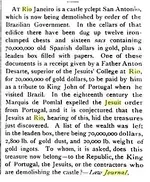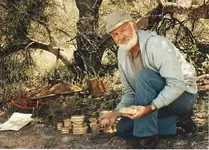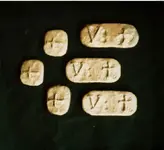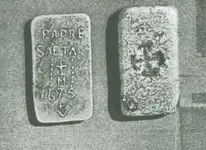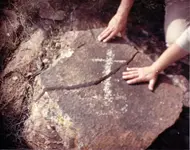Greetings,
One more time, but not so long winded this time, thank you in advance.
Springfield wrote
Oro - no need to apologize for the lack of reliable data. It is what it is. This is why we're asking the questions. Don't get frustrated that some of us need more than conjecture. We want to believe - really.
I was
not apologizing. Your free use of that term "conjecture" strikes me as odd however, for what this case is, is a report from an individual, whom is named. The piles of slag were seen and reported by a number of witnesses; these mounds of slag vanished, and we have ONE explanation as to where they went. What we do
not have is some alternate story to explain it. You may see that as "conjecture" but I see it as the most likely, and with the evidence available, the only logical explanation as to what happened to all that slag.
If we try to explain it away as copper slag, then where did all that silver come from that adorned the mission of San Xavier? Why did father Segesser mention that he was in "the
SILVER mountains" and complain that he had a hard time paying the high wages of overseers because he could not work the mines securely? All still just conjecture in your eyes?
Do we just dismiss the director of the US Mint, the governor of Arizona, the fine geologists of the US Geological Survey, when they stated that the Jesuits were the pioneer miners in Arizona? Apparently
yes indeed, for we have modern historians like Polzer and Burrus who insist it isn't so!
I will close with one more statement attributing mining activities to the Jesuits in Arizona, just to show that we are hardly scratching the surface for source materials; I don't expect this will add any weight to change the minds of our skeptics, and at this point I don't think anything would. I had hoped to see some counter evidence presented, not just snide remarks and gainsaying, but then I was laboring under the mistaken impression that we all have kept open minds about the topic.
Here then, for your certain disapproval, one last source:
The Jesuit fathers were the pioneer miners of Arizona and the first Europeans to attempt the extract and reduction of its rich silver ores. When or where this first mining was done we have no means of knowing but it could not be long after the establishment of the missions at San Xavier and Tumacacori. That it was prosecuted on an extensive scale there is reason to believe from the old shafts and tunnels which are found in the mountains surrounding this old mission and from the piles of slag which are yet seen in the vicinity of the ruins. The success of the mission fathers induced others to engage in the business Many rich discoveries were made and a great deal of bullion was transported from Pimeria Alta.
When the Territory of Arizona passed into the possession of the United States there was not a single mine worked within the limits of the Gadsden Purchase or in all Arizona. Want of protection from Apache depredations had caused the abandonment of every mining enterprise and the old shafts and tunnels and the furnaces were all that was left of once prosperous mining establishments. The first mining by Americans was in the Santa Rita mountains. The Sonora Mining & Exploring Company and the Arizona Mining Company were organized some time in 1855. These companies secured possession of many of the old mines which had been opened in early times by the mission fathers and recommenced work upon them aided by all the improved machinery and appliances then in vogue.
Copper Curb and Mining Outlook, pp 22-23 Vol 14, 1916
Good luck and good hunting, thank you all for the very interesting debate.
Oroblanco




